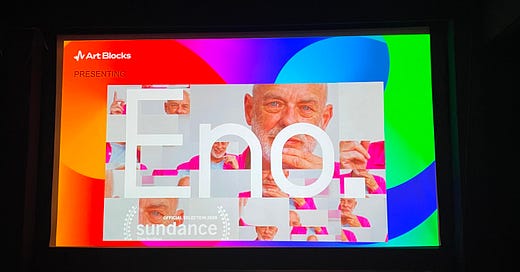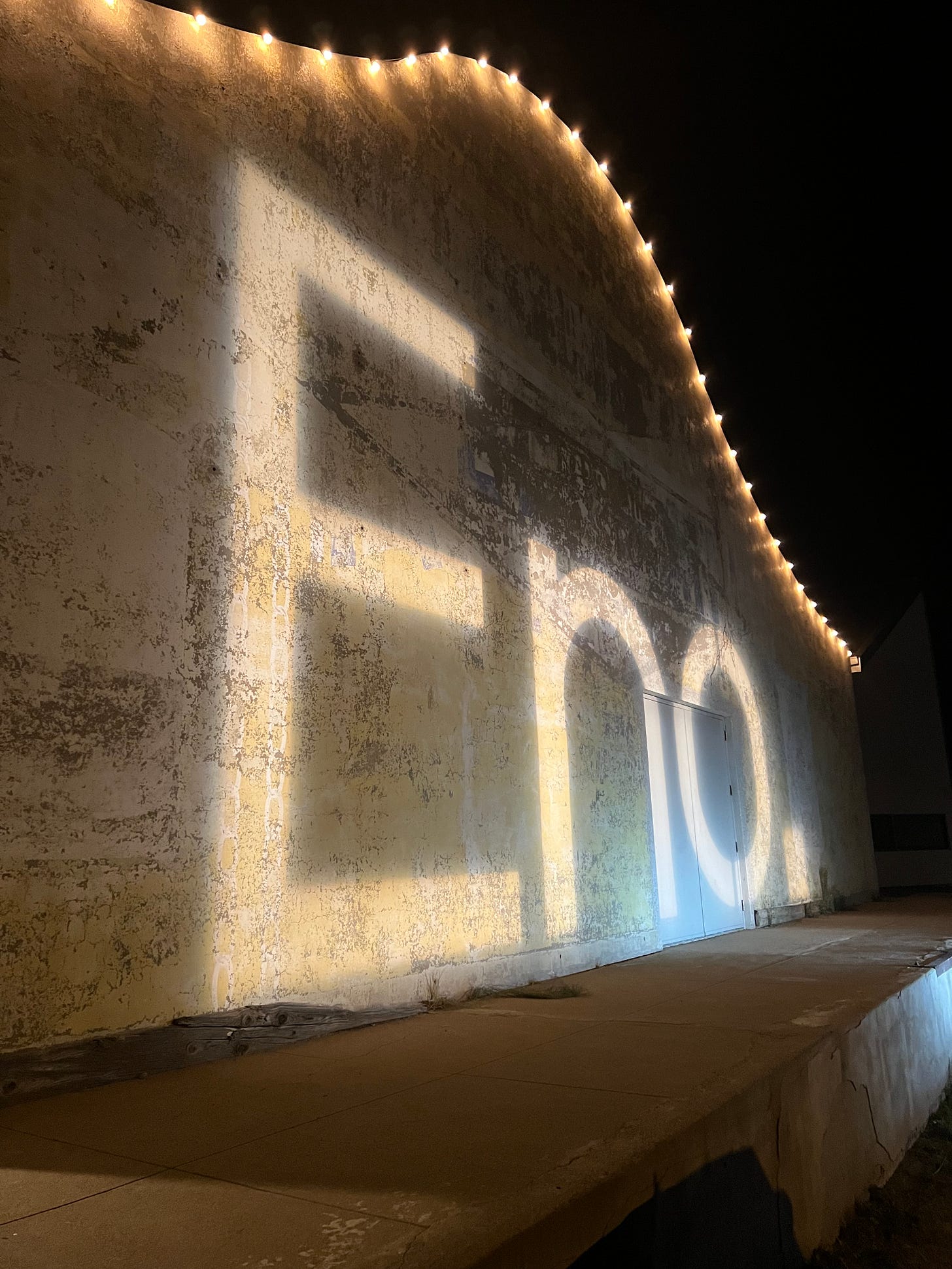In the twilight of 2024, I went on a journey to see some art. I boarded two flights followed by a 3-hour van ride through the desert. During this trek, my small caravan of art and design journalists from New York stared in reverence at barren landscapes and expansive, colorful skies. We also absconded to the Lone Star ghost town of Van Horn to eat flautas and pie at Broadway Cafe before arriving in Marfa, Texas. From there, we explored an array of generative art and even sat in on a conversation with Bernar Venet to learn about his latest experimentations.
But the weekend’s final generative art showcase was the most anticipated: “Eno.”
To try and wax poetic on a documentary with an estimated 52 quintillion possible variations would be almost as challenging as condensing the life of an artist as prolific as Brian Eno into two hours. It’s an experience more akin to live performance than film, but I will at least attempt to illustrate its basic framework.
The film’s generative algorithm recalibrates onscreen each time we move between scenes, sifting through archival footage of Eno onstage and in studio with his iconic collaborators. Our screening included ample footage of Eno’s early days with Roxy Music. We enjoyed brief clips capturing his days in Berlin with Bowie, but wanted for much more. The film also invited us as voyeurs into an extended segment of Eno and Bono in a tense stalemate while recording U2’s “Pride (In the Name of Love).”
But the film’s most meditative and intimate moments were its most direct. Across 500 hours of footage, the algorithm generates most often from recent interviews with Eno at his bucolic home and studio. In addition to singular meditations on the creative process, he muses on sustainability and nuances of music production with astonishing precision. The maestro also reveals philosophies and practices that have stewarded his artistic career.
In an attempt to distill the ephemeral, I jotted down five Eno tenets I found most insightful. If you’ve already seen or plan to see the film, please share whatever wisdoms were unearthed in your screening as well.
1 – “Humans are very good at imagining,” Eno posited in our screening’s opening scene. In naming the value of ambient music, he points to its capacity to create space for listeners to imagine. When we imagine, we begin to feel, and per Eno, “Feelings are the beginning of thoughts.”
2 – “Feelings over thoughts” is a popular Eno mantra paraphrased and reiterated in the film. Foregrounding intuition over logic is not just advice for making art, but also a means of stirring demonstrative change. An analytic approach cannot shift perspective with the same poignancy as an emotional appeal.
3 – The very best ideas are often the simplest. Case in point: “Input Time vs Output Time.”
Eno advises artists to distinguish hours used to create and experiment from hours spent absorbing and processing. In an era of overstimulation, it’s an actionable step toward restoring balance.
4 – I was cynical when Eno first uttered, “Music can save the world,” but his point was ultimately compelling. He cites music in even its most primitive forms as foundational to human existence. Such noises pre-empted words and speech, and remain at our disposal not only to communicate but to build community.
5 – With Eno’s confidence in human nature, it was comforting to also hear him forecast opportunity as opposed to threat. He likened humankind to stewards of our planet—symbiotic and not separate from the natural world—with a duty to respond instead of submit. Eno emphasized “the climate as the impetus,” the spark we can use to illuminate a path toward a better world.






